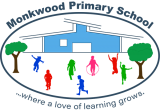English
Early Reading and Phonics
SYSTEMATIC SYNTHETIC PHONICS
At Monkwood Primary, we use Read Write Inc Phonics (RWI) to give your child the best possible start with their reading and writing.
Phonics is a way of teaching children to read and write by blending and segmenting individual sounds. Every letter, and different combinations of letters, make particular sounds. For example, the letter ‘s’ makes a hissing sound, like a snake.
WHAT IS READ WRITE INC?
RWI was developed by Ruth Miskin and more information on this can be found here.
RWI is a phonics programme which helps children to learn to read fluently and at speed, so they can focus on developing their skills in comprehension, vocabulary and spelling. The programme is designed for children aged 4-7, however, at Monkwood Primary, we begin the programme in Foundation Stage 1 and continue teaching RWI beyond the age of 7 if they need further support in their reading.
HOW IS RWI TAUGHT
Phonics is taught in small groups of 10-12 children. All children are assessed regularly so they work with children at the same level, allowing complete participation in lessons.
READING
The children:
- learn 44 sounds and the corresponding letters/letter groups using simple picture prompts
- learn to read words using Fred talk and sound blending
- learn to isolate different sounds in a word. We use a dot under letters where one letter makes one sound and a line under digraphs or trigraphs.
- read from a range of storybooks and non-fictions books matched to their phonic knowledge
- work well with partners
- develop comprehension skills in stories by answering ‘Find It’ and ‘Prove It’ discussion questions.
WRITING
The children:
- learn to write and form the letters/letter groups which represent the 44 sounds with the help of fun phrases
- learn to write words by using Fred Talk
- learn to build sentences by practising sentences out loud before they write
TALKING
The children work in pairs so they:
- answer every question
- practise every activity with their partner
- take turns in talking and reading to each other
- develop ambitious vocabulary
KEY TERMS AND PHRASES
- Phoneme – a single unit of sound
- Grapheme – How a sound is written using letters (e.g. ‘u’ in ‘book’ is written using ‘oo’)
- Digraph – two letters make one sound (e.g. sh, ch, ai, ea, ou, ow)
- Trigraph – three letters make one sound (e.g. igh, ear, air, ure)
- Split digraph – two letters make one sound but the letters have been split apart by another letter
- Segment – to break down the word into its individual sounds to spell (e.g cat can be split into the sounds c-a-t.)
- Blend – to put or merge the sounds together to make a word (e.g. the sounds d-o-g are blended to the word ‘dog’)
- Fred Talk – Teachers will introduce your child to a toy frog called Fred once he or she is ready to start reading words.
Fred can only say the sounds in a word and needs your child to help him read the word. Fred will say the sounds and children will work out the word. For example, Fred will say the sounds c–a–t, and children will say the word cat. This is Fred Talk: sounding out the word.
Reading in School
At Monkwood Primary school, we want our children to develop a love of reading both when sharing texts at school and at home. We recognise that reading is one of the most important skills will learn during their time with us.
Our aim is that every child leaves Monkwood Primary School a confident, fluent reader who loves reading and has a reading age that at least matches their chronological age.
Therefore, we have designed and implemented a bespoke approach to the teaching of reading, which is delivered once our children have completed the Read, Write, Inc Phonics scheme until the end of Year 6. This approach has been designed with our children in mind. We have used our knowledge of the children, as well as formative and summative assessment data, along with evidence based research, to plan a series of sessions that;
- Increase stamina – children will be able to read more text for a longer period whilst retaining understanding
- Increase accuracy – children will make less substitutions, omissions, mispronunciations, additions when reading a ‘cold’ text
- Increase enjoyment – children will read more and will be more willing to explore a wider range of literature
- Increase confidence – children will tackle challenging texts with greater willingness and show improved tenacity in teasing out meaning
- Increase engagement – will offer more extended contributions in group discussions about challenging texts.
We have recently updated our Monkwood Primary School Reading Spine. Texts have been carefully selected to ensure that they are high quality and age appropriate. A range of fiction (both modern and classic), non-fiction and poetry books make up this spine.
Our approach is intended to be a whole-class approach to reading. This will give children the opportunity to be exposed to age appropriate books and the chance for our less able pupils to ‘keep up’ with their peers (with the main aim of ‘closing the gap’). Some children will require additional support during each session to help them access the text. This will be done through teacher, teaching assistant or peer support. Some children will need further reading intervention to support them in ‘catching up’ with their peers. This will happen beyond the reading sessions.
All classroom have a designated reading area. Books have been carefully selected for each year group to promote inclusion, diversity, equality, aspiration and the classics. Class Teachers will choose books from this collection as their ‘Reading for Pleasure Book’, meaning that these will be read to the children for the last part of the school day.
Reading at Home
All children are encouraged to read regularly at home. In Key Stage One, children are given book that closely matches their phonic stage plus a library book to share with an adult. Once we are sure that children are fluent, confident readers, they have the freedom to select content appropriate texts that interest them from our Library.
In Key Stage One, all children have a Reading Record Book. This is used to share what has been read between home and school. In Key Stage Two, we have recently started using Boom Reader (an APP where adults and children can keep a record of what they are reading).
Our Curriculum in Detail
Find out more
If you would like to find out more about our curriculum or have any queries please contact Ms K Sherburn, Headteacher, using our contact details.




